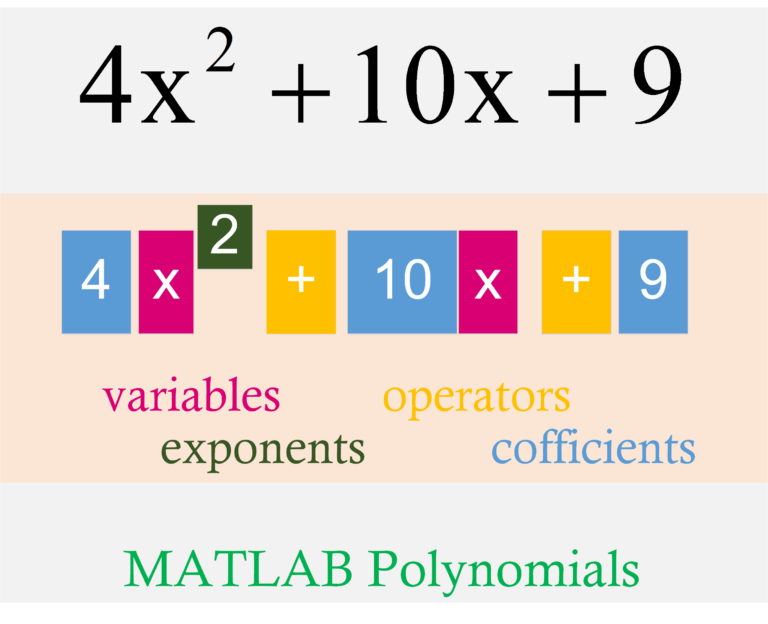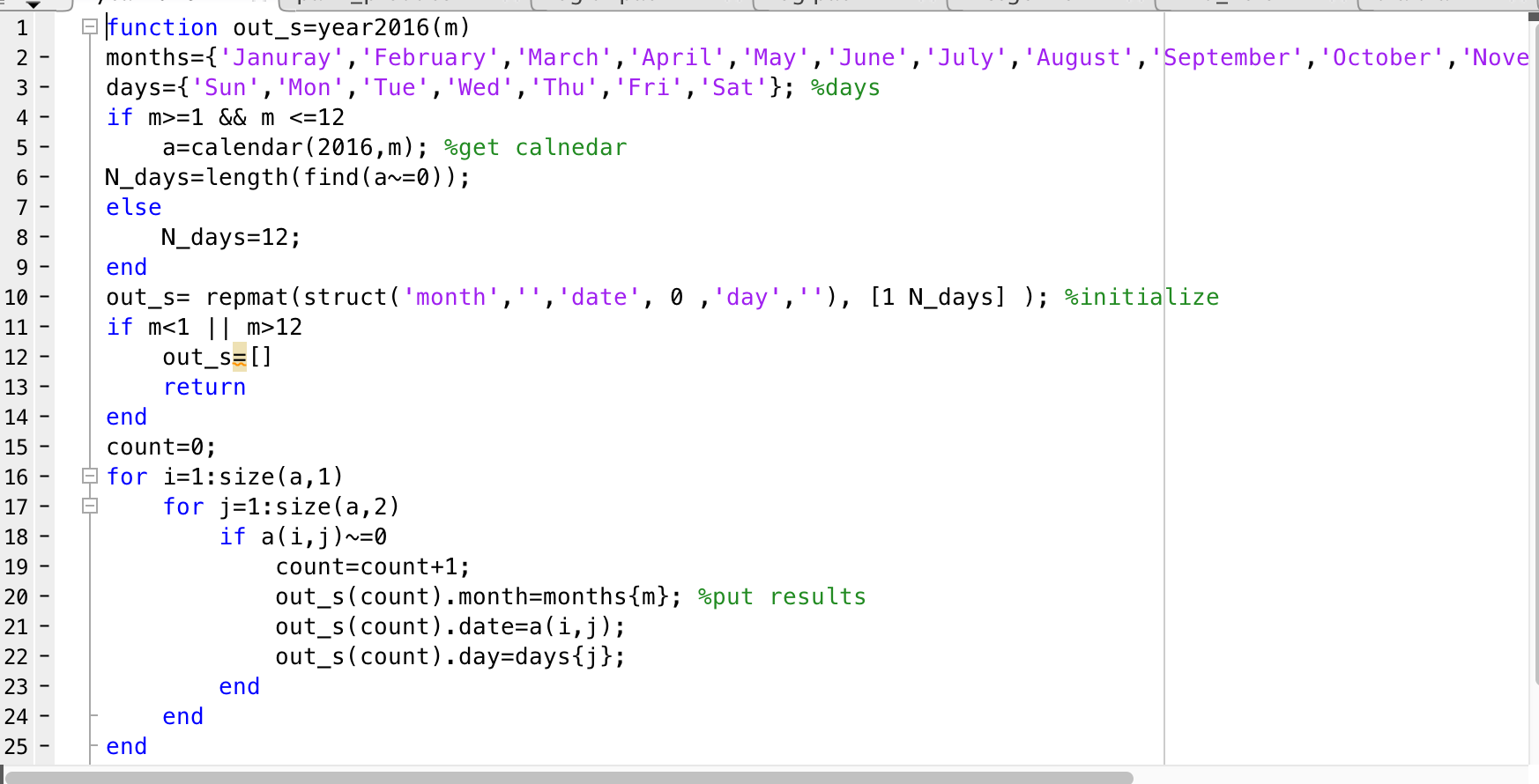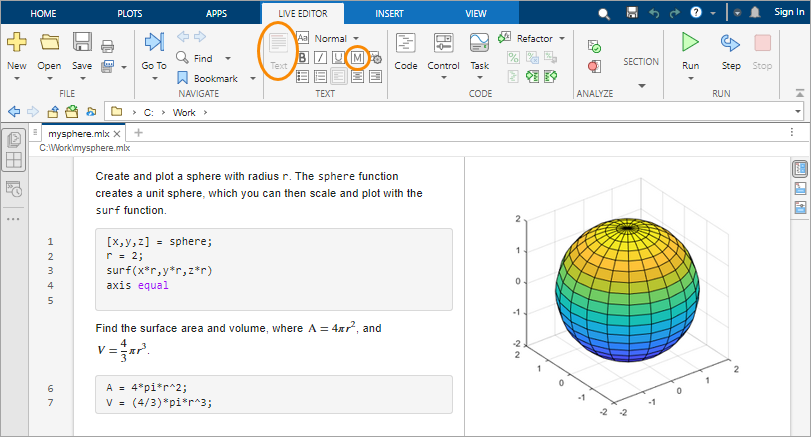
This is because $\exp(-2(19.4)^2)$ equals 0 with double precision numbers.
Find matlab code#
* Note that this method (and most numerical methods) will not work for $|x|$ greater than ~19.3 for this function. Im guessing you are getting feedback from either humans or the MATLAB Code Analyzer about using logical indexing instead of find. Plot(found_roots,zeros(size(found_roots)),'rx') xe(x/2)(tanx/2)cos(x/2) We can solve this equation by using the MATLAB function fzero to find the solutions (if any) of xe(x/2)tanx/2cos(x/2)0. indices find(X, k) or indices find(X, k, 'first') returns at most the first k indices corresponding to the nonzero entries of X. In general, find(X) regards X as X(:), which is the long column vector formed by concatenating the columns of X. Start_pts = linspace(interval(1),interval(2),N) įound_roots(end+1) = fzero(F,) If none are found, find returns an empty, 0-by-1 matrix. matlab is giving me complex number when the expected answer is. Note that this will only find roots where the sign changes. Determines the poles and zeroes and show the pole-zero configuration in s-plane using MATLAB. Finding roots of polynomials MATLAB can find the roots of polynomials via the roots command.

The two arrays are now xn x x x x () () () () () 0 1 2. MATLAB will execute the above statement and return the following result. For example, let us create a row vector rv of 9 elements, then we will reference the elements 3 to 7 by writing rv (3:7) and create a new vector named subrv. It returns a vector that contains the linear indices. MATLAB allows you to select a range of elements from a vector. The relational expression can be used in conjunction with find to find the indices of elements that meet the given condition. If any roots were missed you could increase N to use more (smaller) starting intervals for fzero. To find y(1) we will move (shift) the first value in h(n) and append it to the end of the array h(n). The find () function in MATLAB is used to find the indices and values of non-zero elements or the elements which satisfy a given condition. By choosing small enough intervals you can obtain very good results.įor example, the following code will find all the roots of your function on the interval. This is not guaranteed to find all zeros, but by passing an interval to fzero you can at least guarantee that you will find zeros where the function changes sign on that interval. floydtest fmincontest, a MATLAB code which calls fmincon(), which seeks the minimizer of a scalar function of multiple variables, within a region specified by linear constraints and bounds. If X contains only integer entries, the result d is also an integer. floyd, a MATLAB code which implements the Floyd algorithm for finding the shortest distance between pairs of nodes on a directed graph. How do you find the determinant in Matlab det (MATLAB Functions) d det(X) returns the determinant of the square matrix X. The matrix formed by taking the transpose of the cofactor matrix of a given original matrix.

To answer your question in a more general sense, a simple way to look for more than one root in MATLAB would be to use the fzero function with many different starting guesses over some pre-defined range. How do you find the Adjugate of a matrix Mathwords: Adjugate. Find the treasures in MATLAB Central and discover how the community Step. Additionally, it is easy to find the roots of the function analytically in this case: Plot the Step and Ramp Response Using the step and lsim Function in MATLAB. It includes the Live Editor for creating scripts that combine code, output, and formatted text in an executable notebook. I can certainly do the programming and calculation parts in Matlab, it's just a matter of being able to load in the data file, matching it to a curve or function, and find the various co-ordinates.Before trying to find all of the roots of this function in MATLAB I think it's worth understanding that it has infinitely many roots due to the inclusion of the $\cos()$ term. MATLAB combines a desktop environment tuned for iterative analysis and design processes with a programming language that expresses matrix and array mathematics directly.

MATLAB returns the contents of the cells as a comma separated list. for where y is 50% and 20% of the peak found in part 1.Īre there any add-on tools or packages which people are aware of which can help me accomplish this? I need to do this for a collection of plots so something reasonably automated would be ideal. To create a cell array of character vectors but i cant seem to find anyway to do it.



 0 kommentar(er)
0 kommentar(er)
